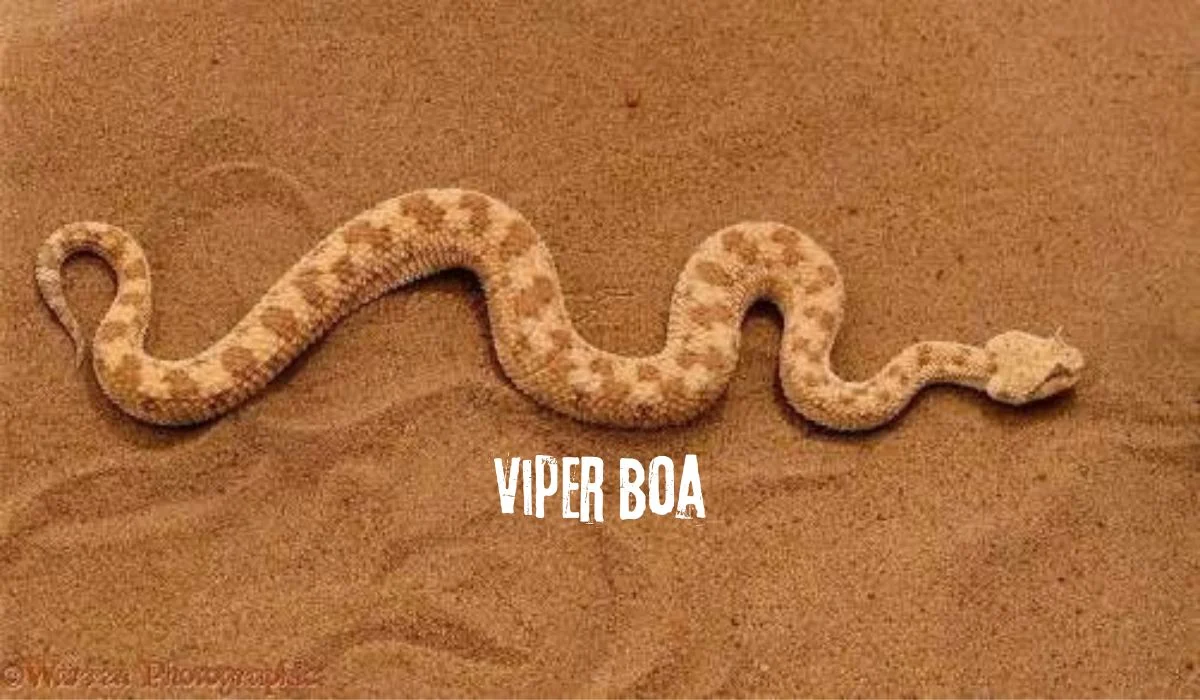The viper boa, also known as Candoia aspera or commonly referred to as the Papuan ground boa, New Guinea ground boa, and viper boa, is a fascinating species within the family Boidae. This article delves into the unique characteristics, habitat, behavior, and conservation status of the viper boa, offering a comprehensive guide for enthusiasts and researchers alike.
Introduction to the Viper Boa
The viper boa (Candoia aspera) is a member of the Boidae family, which includes other boas and pythons. Renowned for its distinctive appearance and behavior, the viper boa is native to the dense forests of New Guinea. Its intriguing physical features and relatively enigmatic lifestyle make it a subject of interest among herpetologists and snake enthusiasts.
Trending: White Mink : Unveiling the Mystique of the Elegant Creature
Taxonomy and Classification
The viper boa belongs to the genus Candoia, which consists of several species of boas found predominantly in the Pacific region. Candoia aspera stands out due to its unique adaptation to its environment and its specialized diet.
Physical Characteristics
The viper boa exhibits several notable physical characteristics that distinguish it from other boas and pythons.
Size and Appearance
Typically, the viper boa grows to an average length of 2 to 3 feet, although some individuals can reach up to 4 feet. Its body is robust and heavily built, which contributes to its characteristic “viper-like” appearance. The snake’s coloration includes a mix of brown, gray, and black, with distinctive patterns that provide camouflage in its natural habitat.
Head and Facial Features
The viper boa’s head is relatively broad and flat, with a slightly triangular shape that contributes to its viper-like appearance. It has small, beady eyes and a slightly upturned snout, which aids in its predatory behavior. These features not only enhance its visual appeal but also play a crucial role in its hunting strategy.
Scales and Texture
The scales of the viper boa are keeled, which means they have a ridge running down their center. This texture gives the snake a rough, almost bumpy appearance. The keeled scales provide additional camouflage by breaking up the snake’s outline against the forest floor.
Habitat and Distribution
The viper boa is indigenous to the forests of New Guinea and some surrounding islands. Its habitat preferences and distribution are closely linked to the unique environmental conditions of this region.
Preferred Environment
The viper boa thrives in the dense, tropical rainforests of New Guinea. It prefers lowland rainforests and occasionally ventures into lower montane forests. The snake’s ability to blend into its surroundings is enhanced by the forest floor’s leaf litter and decaying vegetation, which provides ample cover and hunting opportunities.
Geographic Range
While the viper boa is primarily found in New Guinea, its range extends to neighboring islands, including parts of Indonesia and Papua New Guinea. The species is well-adapted to the humid, tropical climate of these regions, which provides a stable environment for its survival.
Behavior and Diet
The viper boa exhibits a range of fascinating behaviors and has specific dietary needs that are closely aligned with its natural habitat.
Feeding Habits
The viper boa is a constrictor, meaning it kills its prey by wrapping around it and squeezing until it suffocates. Its diet primarily consists of small mammals, birds, and reptiles. The snake uses its keen sense of smell and heat-sensing pits to detect prey, which it ambushes from a concealed position.
Activity and Habits
The viper boa is primarily nocturnal, becoming active during the night to hunt and explore. During the day, it hides under leaf litter, logs, or other debris to avoid predators and maintain its body temperature. Its secretive nature makes it challenging to observe in the wild, contributing to its elusive reputation.
Reproduction and Lifespan
Understanding the reproductive behavior and lifespan of the viper boa provides insight into its lifecycle and reproductive strategies.
Breeding and Reproduction
The viper boa is ovoviviparous, meaning it gives birth to live young rather than laying eggs. Females carry the eggs internally until they hatch, giving birth to fully developed young. The breeding season typically occurs during the wet season when food is abundant, and environmental conditions are favorable for reproduction.
Lifespan
In captivity, the viper boa can live up to 20 years with proper care and maintenance. In the wild, its lifespan is generally shorter due to predation, disease, and environmental factors. Captive care involves providing a suitable habitat, appropriate diet, and regular veterinary check-ups to ensure a long and healthy life.
Conservation Status
The conservation status of the viper boa is influenced by various factors, including habitat loss and the pet trade. Understanding these issues is crucial for ensuring the species’ survival.
Threats and Challenges
The primary threats to the viper boa include habitat destruction due to deforestation and the illegal wildlife trade. As forests are cleared for agriculture and development, the viper boa’s natural habitat shrinks, reducing its chances of survival. Additionally, the collection of wild specimens for the pet trade can further deplete populations and disrupt local ecosystems.
Conservation Efforts
Conservation efforts for the viper boa focus on habitat protection, legal regulations, and public awareness. Organizations and local governments work to establish protected areas and enforce laws that prevent illegal trade and habitat destruction. Additionally, education and outreach programs aim to raise awareness about the importance of preserving this unique species and its habitat.
Captive Care and Husbandry
For those interested in keeping a viper boa as a pet, understanding its specific needs and requirements is essential for ensuring its health and well-being.
Enclosure Requirements
The viper boa requires a spacious enclosure that mimics its natural habitat. A terrarium with adequate hiding spots, branches, and a suitable substrate, such as leaf litter or moss, is ideal. Maintaining proper humidity and temperature levels is crucial for the snake’s health.
Diet and Feeding
In captivity, the viper boa’s diet typically consists of pre-killed rodents or other small prey items. Providing a balanced diet that meets its nutritional needs is essential for its health and longevity. Regular feeding schedules and monitoring the snake’s weight and condition are important aspects of its care.
Health and Veterinary Care
Regular veterinary check-ups are essential for monitoring the viper boa’s health and addressing any potential issues. Common health concerns include parasites, respiratory infections, and skin problems. Prompt attention to any signs of illness ensures a long and healthy life for the snake.
Conclusion
The viper boa (Candoia aspera), with its unique appearance and behavior, is a remarkable species within the Boidae family. Native to the forests of New Guinea, this constrictor snake plays a crucial role in its ecosystem. While it faces threats from habitat destruction and the pet trade, conservation efforts and responsible care can help ensure its survival.
Whether observed in the wild or cared for in captivity, the captivates with its distinctive features and elusive nature. By understanding its needs and challenges, we can contribute to the preservation of this fascinating species and continue to appreciate its role in the natural world.





One thought on “Viper Boa : An In-Depth Exploration of the Papuan Ground Boa”